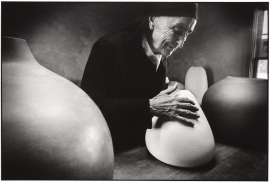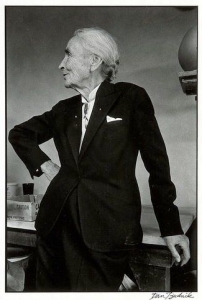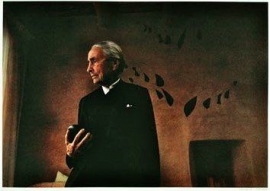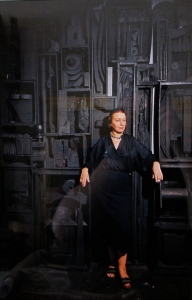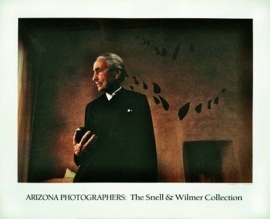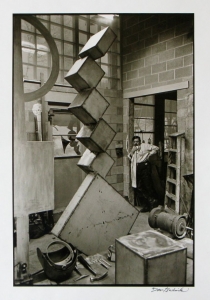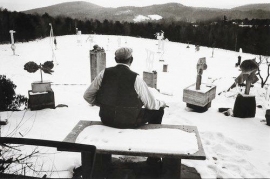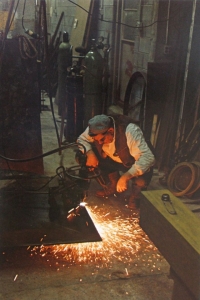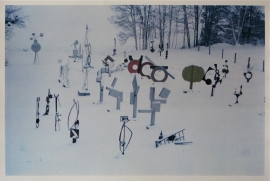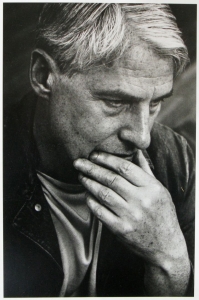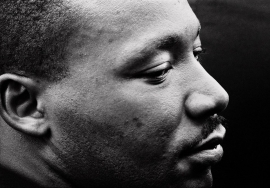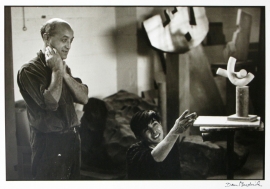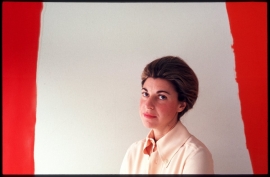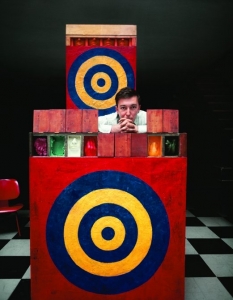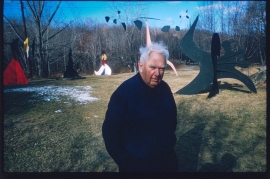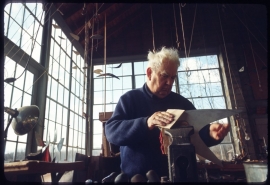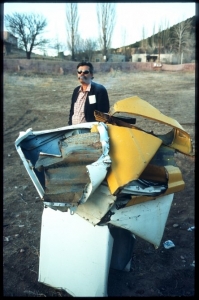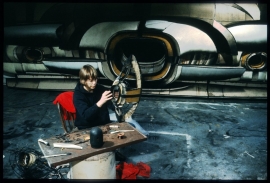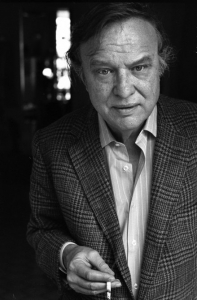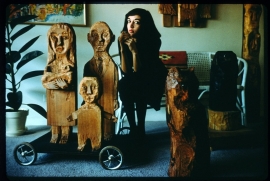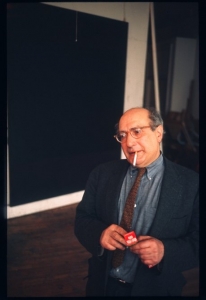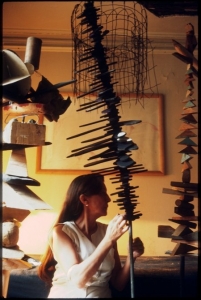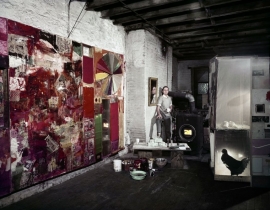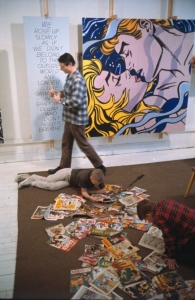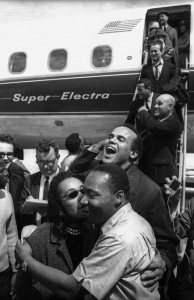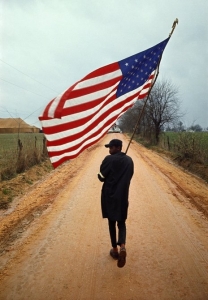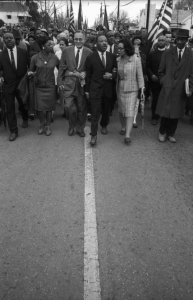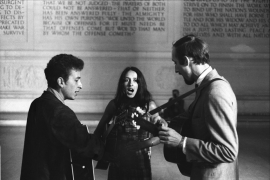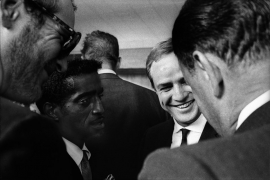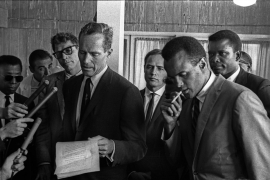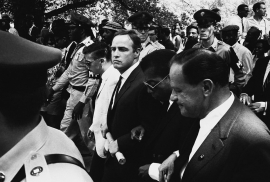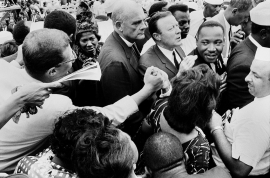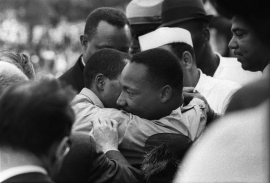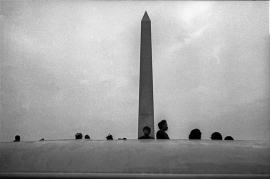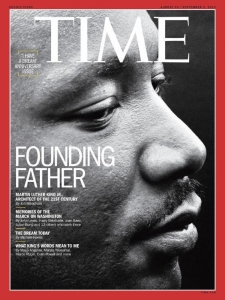Dan Budnik
1933 to 2020
Fine Art Photography
Dan Budnik is a photojournalist who has documented social and cultural change in the world for the past 55 years. He was at the heart of the civil rights movement, the center of the New York school of Abstract Expressionists and has been a fervent advocate for indigenous people.
Featured photographs below are from the New York School of Abstract Expressionist Artists in the 1950s and 1960s and important artists of the 20th century, The Civil Rights Movement, Selma to Montgomery, March 1965 and the “I Have a Dream” speech at the “March on Washington” in August 1963
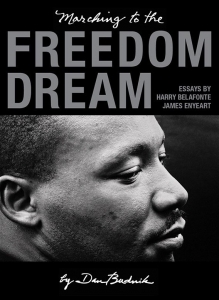 In August 2014 Marching to the Freedom Dream was published by Trolley Books in London. The book shows Dan Budnik’s significant body of work documenting three seminal marches of the Civil Rights movement, between 1958 and 1965. The publication coincided with the 50th anniversary of the Civil Rights Act of 1964, and precedes the 50th anniversaries of the Selma-Montgomery March and the Voting Rights Act in 2015. With the introduction written by the prolific civil rights activist, Harry Belafonte, an essay by the American photo historian James Enyeart and an afterword by Dan Budnik. Autographed, Price: $250.00
In August 2014 Marching to the Freedom Dream was published by Trolley Books in London. The book shows Dan Budnik’s significant body of work documenting three seminal marches of the Civil Rights movement, between 1958 and 1965. The publication coincided with the 50th anniversary of the Civil Rights Act of 1964, and precedes the 50th anniversaries of the Selma-Montgomery March and the Voting Rights Act in 2015. With the introduction written by the prolific civil rights activist, Harry Belafonte, an essay by the American photo historian James Enyeart and an afterword by Dan Budnik. Autographed, Price: $250.00
As a photojournalist, Dan Budnik is known for his photographs of artists, but also for his photo-documentation of the Civil Rights Movement and of Native Americans. Born in 1933 in Long Island, New York, Budnik studied with Charles Alston at the Art Students League of New York (1951-53) and began his photography career as Philippe Halsman’s assistant. Working at Magnum Photos (1957-64) in 1963, Budnik persuaded Life Magazine to have him create a long-term photo essay showing the seriousness of the Civil Rights Movement, documenting the Selma to Montgomery march and other historical Civil Rights moments. Budnik went on to photograph for premier publications such as Life, Fortune, Look, Newsweek, Sports Illustrated and Vogue.
He has been a major contributor to eight Time-Life Wilderness and Great Cities series and received a 1973 grant from the National Endowment for the Arts for his work on the Hudson River Ecology Project and a 1980 grant from the Polaroid Foundation for Big Mountain: Hopi-Navajo Forced Relocation.
Biography
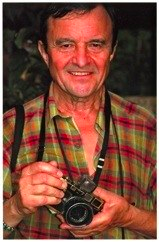
Pastaza, Ecuador, December 2004 Photo by Kresta King Cuther
Dan Budnik, (b. 1933-died 2020), whose career as a photographer has spanned more than half a century, was most recent recipient, in 1998, of the prestigious American Society of Media Photographers Honor Roll Award, an accolade previously accorded to such eminent photographers as Man Ray, Edward Steichen, Walker Evans, Dorothea Lange, André Kertész, Ernst Hass, and Henri Cartier-Bresson. After studying with Charles Alston at the Art Students League of New York (1951-53), Budnik began his career as a Magnum photographer.
His photo-essays have appeared in periodicals that include Art in America, LIFE Magazine, Fortune, The London Sunday Times, Magazine, Look, Modern Photography, Newsweek, The New York Times Magazine, Réalités and Vogue. He has been a major contributor to many books, including six from the Time-Life Wilderness and Great Cities series. Budnik’s photographs appear in “The Museum: An Informal Introduction to The Museum of Modern Art” by Richard Schickel (1970). He is included in two seminal histories of photography: Nathan Lyons’ “Photography in the Twentieth Century” (1967) and “The Picture History of Photography from the Earliest Beginnings to the Present Day”, by Peter Pollack (1977).
Dan Budnik lives in Tucson, Arizona and is currently involved with creating a photographic record of ancient petroglyphs. Widely acclaimed for his photo-documentation of Native Americans (including his collaboration with Sandy Johnson on “The Book of Elders: The Life Stories of Great American Indians”, 1994), the Civil Rights Movement, and environmental issues. Budnik received a 1973 grant from the National Endowment for the Arts for his work on the Hudson River Ecology project and a 1980 grant from the Polaroid Foundation for Big Mountain: Hopi-Navajo Forced Relocation.
The scope of Dan Budnik’s documentation of major 20th century artists has yet to be fully recognized. In addition to David Smith, he photographed Georgia O’Keeffe, Lee Bontecou, Alexander Calder, John Chamberlain, Willem de Kooning, Helen Frankenthaler, Jasper Johns, Roy Lichtenstein, Robert Motherwell, Mark Rothko, and many others.
Dan Budnik’s photographs of David Smith first appeared as an April 5, 1963 photo essay for LIFE Magazine. They were first exhibited, in 1974, at the University Art Museum State University of New York, Albany, The Cooper Union for the Advancement of Science and Art, New York, and Rice University, Houston, Texas. The same exhibition circulated nationally under the auspices of the American Federation of Arts, from 1975-78. They have been widely published, and have become an essential part of the extensive body of literature on Smith. Twenty-four of Budnik’s photographs of Smith are reproduced in the catalogue of the current exhibition at The Solomon R. Guggenheim Museum, David Smith: A Centennial.
Selected Public Collections
Albright-Knox Art Gallery, Buffalo, New York
The Albuquerque Museum, New Mexico
Center for Creative Photography, The University of Arizona, Tucson
The Cleveland Museum of Art, Ohio
Guild Hall, East Hampton, New York
Indiana University Art Museum, Bloomington
Museum Ludwig, Cologne, Germany
Museum of Fine Arts, Houston, Texas
The Museum of Modern Art, New York
Museum of New Mexico, Santa Fe
Harry Ransom Center, The University of Texas at Austin
Roswell Museum and Art Center, New Mexico
Seattle Art Museum, Washington
Worcester Art Museum, Massachusetts
“Picturing Artists (1950s-1960s)” Photographs by Dan Budnik
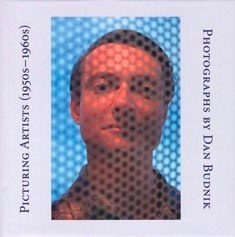 The young Jasper Johns stands atop a small ladder to smooth one of the gridlines on his silver “Numbers” painting of 1964. He is wearing an oddly coordinated padded silver jumpsuit, mindless of the camera that captures him mid-gesture. Photographed the same year, Roy Lichtenstein strides thoughtfully across his studio floor while his two young sons read from dozens of comic books spread out all over the rug. In 1967, Diane Arbus leans against a tabletop at The Museum of Modern Art, New York, nonchalant in a chic white mini-dress and matching thigh-high boots, while her camera hangs heavily around her neck. This deluxe collection of intimate, highly compelling color and black-and-white photographs includes portraits of many of the most important and pioneering artists of the postwar period in American art. The series, which includes studies of Henri Cartier-Bresson, Lee Bontecou, Louise Bourgeois, John Chamberlain, Willem de Kooning, Helen Frankenthaler, Philip Guston, Ellsworth Kelly, Louise Nevelson, Barnett Newman, Isamu Noguchi, Claes Oldenburg, Robert Rauschenberg, Mark Rothko, David Smith and many others, was, in fact, initially inspired by the work of Cartier-Bresson, from whom Budnik learned to adopt an attitude of anonymity with respect to his subjects, working–as noted photo historian James Enyeart writes in his catalogue essay–“at the periphery of their attentiveness to his camera.”
The young Jasper Johns stands atop a small ladder to smooth one of the gridlines on his silver “Numbers” painting of 1964. He is wearing an oddly coordinated padded silver jumpsuit, mindless of the camera that captures him mid-gesture. Photographed the same year, Roy Lichtenstein strides thoughtfully across his studio floor while his two young sons read from dozens of comic books spread out all over the rug. In 1967, Diane Arbus leans against a tabletop at The Museum of Modern Art, New York, nonchalant in a chic white mini-dress and matching thigh-high boots, while her camera hangs heavily around her neck. This deluxe collection of intimate, highly compelling color and black-and-white photographs includes portraits of many of the most important and pioneering artists of the postwar period in American art. The series, which includes studies of Henri Cartier-Bresson, Lee Bontecou, Louise Bourgeois, John Chamberlain, Willem de Kooning, Helen Frankenthaler, Philip Guston, Ellsworth Kelly, Louise Nevelson, Barnett Newman, Isamu Noguchi, Claes Oldenburg, Robert Rauschenberg, Mark Rothko, David Smith and many others, was, in fact, initially inspired by the work of Cartier-Bresson, from whom Budnik learned to adopt an attitude of anonymity with respect to his subjects, working–as noted photo historian James Enyeart writes in his catalogue essay–“at the periphery of their attentiveness to his camera.”
Features outstanding essays by James Enyeart and Irving Sandler, America’s premier chronicler of postwar American art, as well as a reprint of a little-known essay by the influential British art critic and curator David Sylvester, which was originally published alongside Budnik’s photographs in 1964. James Enyeart has had a long and distinguished career as a proponent and historian of photography. He currently holds an endowed professorship at the Center for Photographic Arts at the College of Sante Fe, of which he was the Founding Director. Previously, he has been Director of The George Eastman House International Museum of Photography and Moving Images, the Center for Creative Photography at the University of Arizona, and the Friends of Photography in Carmel, California. Knoedler & Company 2006-2007


